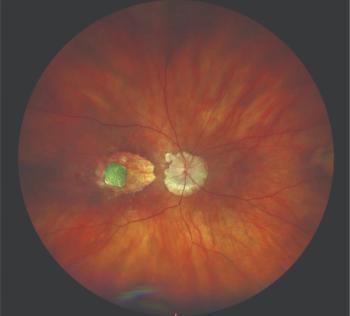
You're not in Oz anymore
Philosophical differences abound between managers and physicians.
Key Points
One discussion centered around the concept of: "It looked so good on paper!" A frantic manager related that his interactive physicians had just adjusted the clinic templates for the fifth time in a year, trying to find the magic answer to a continual patient numbers slump.
The continual scheduling and rescheduling of patients was taxing an already-overstretched reception staff, and patients were refusing to reschedule again. Some were even leaving the practice, citing a lack of respect for their time. Add in that the overtime was increasing exponentially to a steady decrease in staff and patient satisfaction, and they had quite a problem.
This practice had several ophthalmologists and two optometrists. While admittedly it is "their" schedule, the manager said he was hired with the strong vote of confidence that they had found the right person to manage the clinic flow and schedules, and that the physicians were eager to step out of the way. That lasted 6 months.
Philosophical differences
This started me thinking of the philosophical differences between managers and physicians, or what I call the difference between Kansas and Oz. Managers live and work in Kansas. Physicians would much rather be in Oz. Unfortunately, this can make for unhappy relations all the way over the rainbow.
Most physicians I visit with are deeply concerned about patient flow and often identify the problems with clinic flow as being a result of poorly trained staff, poorly motivated staff, and patients incorrectly scheduled by the schedulers. They are usually highly frustrated because the staff just won't step up to the tasks at hand, become more task-oriented and efficient, and have patients seen in a timely fashion. That is the Oz view.
The Kansas view is that a great deal of the clinic flow is largely determined by the practice style of the physician(s), including arrival times. If the first appointment slot is for two patients at 8:30 a.m., and there are two additional patients booked every 15 minutes, when you arrive at 9:30 a.m. the clinic flow is already shot for the morning and you will be behind until patients stop coming. Intermix that with charting, phone calls, and Internet time, and you are going to be behind.
A manager's job is to look critically at physician practice styles and trends and intermix this information with the right patient numbers and types of patient exams, as well as staffing, in a global view. The goal is to make it work for all involved.
Physicians often discuss schedules in a "paper towel roll" aspect. They see their schedule, not how it intertwines with other physician schedules/staffing and diagnostic schedules/staffing. For example, if you have a full diagnostic visual field schedule, and one of the physicians continues to request add-on fields for a patient's convenience (to get it all done today), then the overall patient wait times, physician wait times, and patient/staff satisfaction are going to be affected.
I had a discussion with a perplexed physician regarding visual field timing. The question was: "If it takes 14 minutes to do both eyes of an HVF [Humphrey Visual Field, Carl Zeiss Meditec], why can we only do two an hour?! What are they doing?"
"Easy," I answered. "There's a complete exam attached to the field and that needs to be done as well."
One of my favorite residents, who was a major surgical phenom, announced with frustration one day that someone needed to light a fire under the operating room (OR) staff to get them moving between cases because he could do a cataract surgery, "with IOL," in less than 15 minutes, but he couldn't get more than two cases an hour through the OR. While his part of the process might be 15 minutes, the OR team and janitor needed 25 minutes to turn that one room over between cases. I saw him crashing back to Kansas . . . until 3 days later.
I was afraid that he might be banging his head against the wall in the OR, or worse, and went to find him. Walking toward our OR suite, I saw a number of staff peering in the suite window, whispering good-naturedly.
There was Bob, swabbing the floor with the janitor. He smiled, gave me the thumbs up, and said, "We just cut 7 minutes off that transition time!"
And somewhere, I swear, I heard bluebirds sing.
Dianna E. Graves, COMT, BS Ed, is clinical services manager at St. Paul Eye Clinic PA, Woodbury, MN. Graves is a graduate of the School of Ophthalmic Medical Technology, St. Paul, MN, and has been a member of its teaching faculty since 1983. She can be reached at
.
Newsletter
Don’t miss out—get Ophthalmology Times updates on the latest clinical advancements and expert interviews, straight to your inbox.





